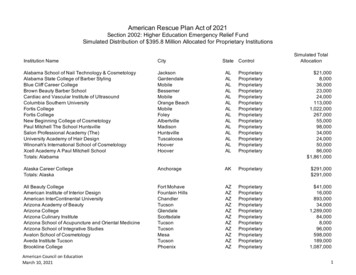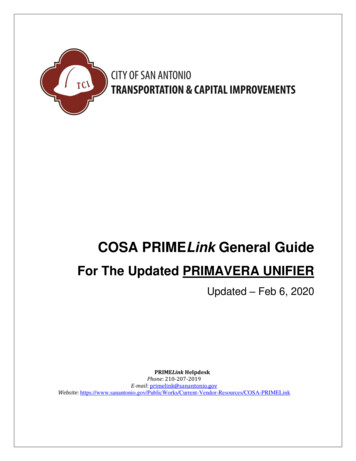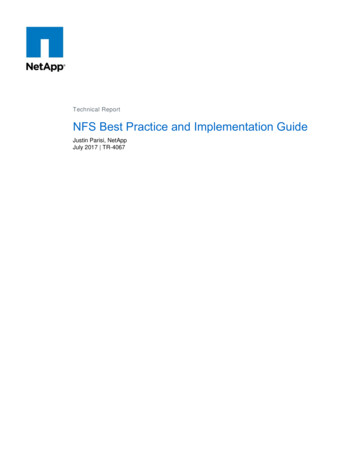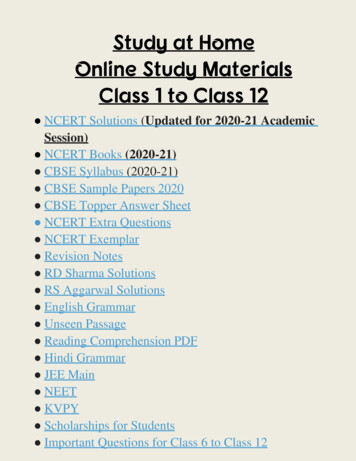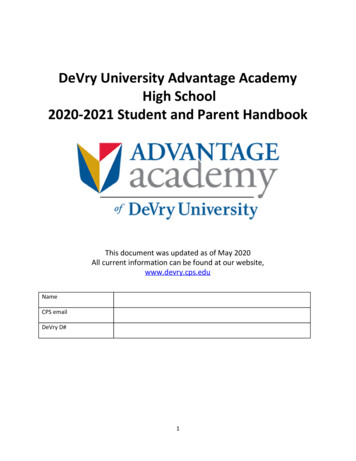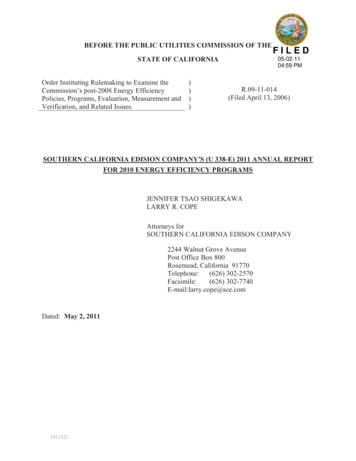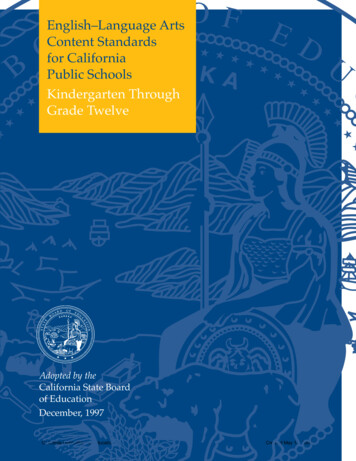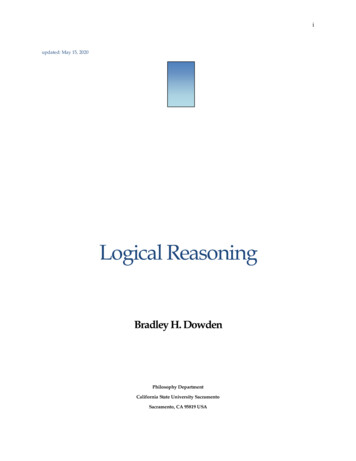
Transcription
iupdated: May 15, 2020Logical ReasoningBradley H. DowdenPhilosophy DepartmentCalifornia State University SacramentoSacramento, CA 95819 USA
iiPrefaceCopyright 2011, 2019 by Bradley H. DowdenThis book Logical Reasoning by Bradley H. Dowden is licensed under a Creative Commons AttributionNonCommercial-ShareAlike CC BY-NC-SA. This license lets others remix, tweak, and build upon your work noncommercially, as long as they credit you and license their new creations under the identical terms. An earlier version of thebook was published on paper by Wadsworth Publishing Company, Belmont, California USA in 1993 with ISBNnumber 0-534-17688-7. When Wadsworth decided no longer to print the book, they returned their publishing rightsto the original author, Bradley Dowden. The current version has been significantly revised. The current onlineversion is 508 compliant for people with disabilities. If you would like to suggest changes to the text, the authorwould appreciate your writing to him at dowden@csus.edu.
iiiPraiseComments on the earlier 1993 paper edition, published by Wadsworth Publishing Company,which is owned by Cengage Learning:"There is a great deal of coherence. The chapters build on one another. The organizationis sound and the author does a superior job of presenting the structure of arguments. "David M. Adams, California State Polytechnic University"These examples work quite well. Their diversity, literacy, ethnic sensitivity, andrelevancy should attract readers."Stanley Baronett. Jr., University of Nevada Las VegasFar too many authors of contemporary texts in informal logic – keeping an eye on the sortsof arguments found in books on formal logic – forget, or underplay, how much of ourdaily reasoning is concerned not with arguments leading to truth-valued conclusions butwith making choices, assessing reasons, seeking advice, etc. Dowden gets the balance andthe emphasis right.Norman Swartz, Simon Fraser University
ivAcknowledgmentsThe following friends and colleagues deserve thanks for their help and encouragement with thisproject: Clifford Anderson, Hellan Roth Dowden, Louise Dowden, Robert Foreman, RichardGould, Kenneth King, Marjorie Lee, Elizabeth Perry, Heidi Wackerli, Perry Weddle, TiffanyWhetstone, and the following reviewers: David Adams, California State Polytechnic University;Stanley Baronett, Jr., University of Nevada-Las Vegas; Shirley J. Bell, University of Arkansas atMonticello; Phyllis Berger, Diablo Valley College; Kevin Galvin, East Los Angeles College;Jacquelyn Ann Kegley, California State University-Bakersfield; Darryl Mehring, University ofColorado at Denver; Dean J. Nelson, Dutchess Community College; James E. Parejko, ChicagoState University; Robert Sessions, Kirkwood Community College; and Stephanie Tucker,California State University Sacramento. Thinking and writing about logical reasoning has beenenjoyable for me, but special thanks go to my children, Joshua, 8, and Justine, 3, for comic reliefduring the months of writing. This book is dedicated to them.This book is dedicated to my wife Hellan whose good advice has improved the book in manyways.
vTable of ContentsPreface. iiCopyright . iiPraise .iiiAcknowledgments .ivTable of Contents . vCHAPTER1How to Reason Logically . 1Facing a Decision as a Critical Thinker . 2Advice for Logical Reasoners . 5Examples of Good Reasoning. 15Review of Major Points . 18Glossary . 19Exercises . 20CHAPTER2Claims, Issues, and Arguments . 24What is a Statement?. 24What is an Argument?. 26What is the Issue?. 29What is a Proof?. 31Indicators . 32Premise Indicators. 35Conclusion Indicators . 35Discount Indicators . 39Rewriting Arguments in Standard Form . 40Conditionals and the Word If . 41Deductively Valid and Inductively Strong. 45Uncovering Implicit Premises . 47Locating Unstated Conclusions . 52Detecting Obscure Argumentation . 55Descriptions and Explanations . 59Review of Major Points . 67
viGlossary . 68Exercises . 70CHAPTER3Writing with the Appropriate Precision . 91Being Ambiguous. 92Context and Background Knowledge . 93Disambiguation by Machine . 98Semantic Disagreements . 99Equivocation . 100Being Too Vague . 101Being Too General . 105Being Pseudoprecise . 109Improper Operationalization . 111Creating Helpful Definitions . 114Different Definitions for Different Purposes . 114How to Avoid Errors when Creating Definitions . 119Review of Major Points . 122Glossary . 123Exercises . 126CHAPTER4How to Evaluate Information and Judge Credibility. 143The Principles of Charity and Fidelity . 143When Should You Accept Unusual Statements? . 146Assessing a Source's Credibility . 149Seeking a Second Opinion . 153Trust Me, I Know It on Good Authority . 156Suspending Belief. 156Getting Solid Information about Whom to Vote For . 158Fake News and Misinformation . 163Review of Major Points . 172Glossary . 173Exercises . 173CHAPTER5Obstacles to Better Communication . 181
viiNot Realizing What You Are Saying . 181Abusing Rules of Grammar . 183Over-Using Euphemisms . 185Unintended Innuendo . 188Disobeying Rules of Discourse. 190Not Sticking to the Issue and Not Treating It Fairly . 191Not Accepting the Burden of Proof . 191Diverting Attention from the Issue . 192Giving Too Many Details . 199Re-defining the Issue . 199Covering Up the Reasons That Favor Your Opponent . 201Review of Major Points . 203Glossary . 203Exercises . 204CHAPTER6Writing to Convince Others. 215Writing with Precision and to Your Audience . 217The Introduction. 218The Middle . 220The Ending . 221Digressions . 222Improving Your Writing Style . 223Proving Your Conclusion. 225Creating Counterarguments . 228Review of Major Points . 237Glossary . 238Exercises . 238CHAPTER7Defending Against Deception . 244Deception Is All Around Us . 245Exaggeration and Lying . 246Telling Only Half the Truth . 249Telling the Truth, While Still Misleading . 256
viiiSaying Little with Lots of Words . 257Persuading Without Using Reasons . 257Deceiving with Loaded Language . 259Using Rhetorical Devices . 261Review of Major Points . 263Glossary . 264Exercises . 265CHAPTER8Detecting Fallacies . 269Ad Hominem Fallacy . 269Fallacy of Circular Reasoning. 271Straw Man Fallacy. 272False Dilemma Fallacy. 274Fallacy of Faulty Comparison . 277Fallacious Appeal to Authority . 278More about Assessing Credibility . 279Spotting an Authority's Bias . 283Slippery Slope Fallacy . 286Genetic Fallacy. 286Non Sequitur. 287Review of Major Points . 289Glossary . 290Exercises . 291CHAPTER9Consistency and Inconsistency . 299Recognizing Inconsistency and Contradiction . 300Identifying Self-Contradictions and Oxymorons . 307Inconsistency with Presuppositions . 309Refuting General Statements by Finding Counterexamples. 312Resolving Inconsistencies . 316Review of Major Points . 319Glossary . 319Exercises . 320
ixCHAPTER10Deductive Reasoning . 334Implying with Certainty vs. with Probability . 334Distinguishing Deduction from Induction . 341Review of Major Points . 346Glossary . 347Exercises . 348CHAPTER11Logical Form and Sentential Logic . 355What is Logic? . 355Logical Equivalence . 356Logical Forms of Statements and Arguments . 358The Logic of Not . 361The Logic of And . 364The Logic of Or . 365The Logic of If-Then. 367The Logic of Only, Only-If, and Unless . 375Sentential Logic . 379Truth Tables . 380Arguments, Logical Consequences and Counterexamples . 3843-Valued Logic. 385History of Sentential Logic . 390Review of Major Points . 392Glossary . 392Exercises . 393CHAPTER12Aristotelian Logic and Venn-Euler Diagrams. 402Aristotle's Logic of Classes . 402Using Venn-Euler Diagrams to Test for Invalidity . 408The Logic of Only in Class Logic. 418Review of Major Points . 421Glossary . 421Exercises . 422CHAPTER13Inductive Reasoning . 432
xGeneralizing from a Sample . 432Random Sample . 435Sample Size . 439Sample Diversity . 441Stratified Samples . 443Statistical Significance . 445Designing a Paired Comparison Test . 447Obstacles to Collecting Reliable Data. 449Varieties of Inductive Arguments . 450Argument from Authority . 450Argument from Analogy . 452Induction from Past to Future (Prediction) . 457Appeal to a Typical Example . 457Argument Based on Signs . 460Causal Inference . 460Inference to the Best Explanation . 460How New Information Affects an Argument’s Strength . 461Statistics and Probability . 466Review of Major Points . 469Glossary . 470Exercises . 472CHAPTER14Reasoning about Causes and Their Effects . 488Correlations. 488Significant Correlations . 495Causal Claims . 497Inferring from Correlation to Causation. 502Criteria for a Causal Relationship. 505Criteria for Creating Good Explanations . 507Assessing Alternative Explanations . 511The Scientific Method . 513Some Case Studies . 514
xiReview of Major Points . 519Glossary . 520Exercises . 522CHAPTER15Scientific Reasoning . 532What is Science? . 532Reviewing the Principles of Scientific Reasoning. 537Testability, Accuracy, and Precision . 538Reliability of Scientific Reporting .
May 15, 2020 · Thinking and writing about logical reasoning has been enjoyable for me, but special thanks go to my children, Joshua, 8, and Justine, 3, for comic relief during the months of writing. This book is dedicated to them. This book is dedicated to my wife Hellan whose good advi


